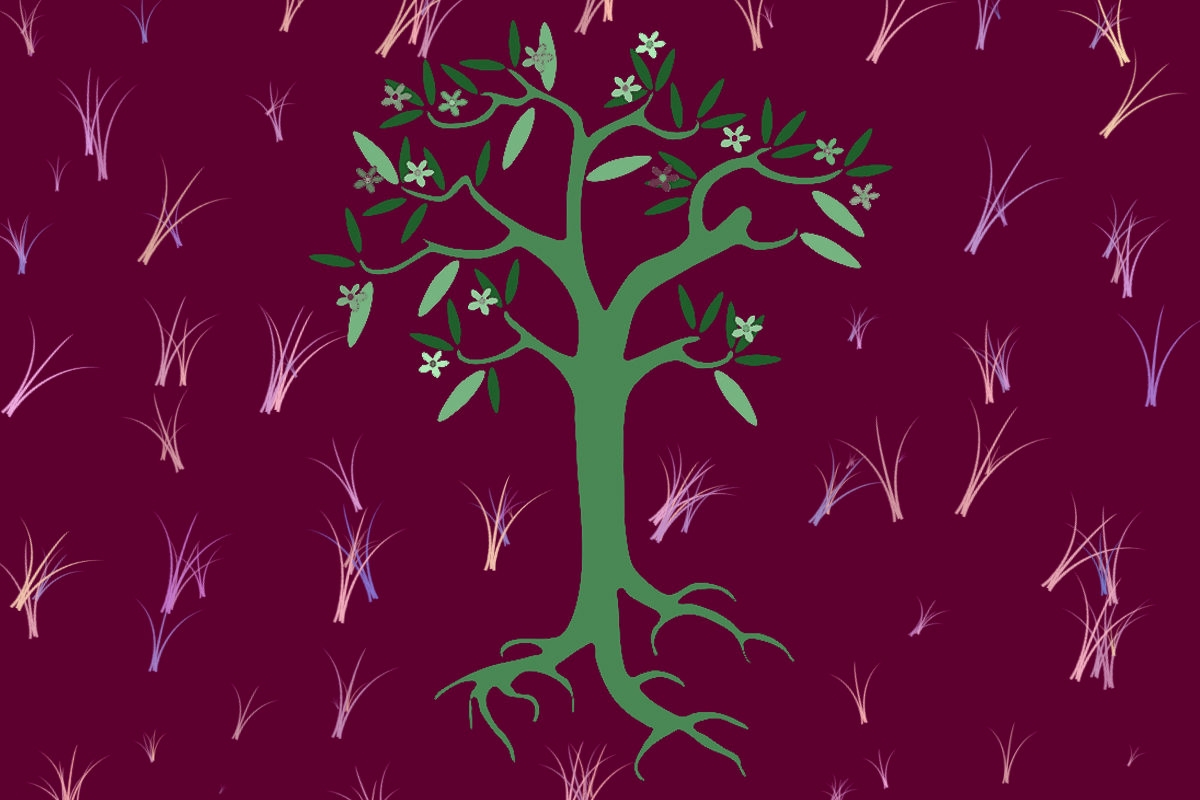I like to say that I was raised Jewish, heavy on the ish. My parents were not devout, and the extent of my Jewish education consisted of summer day camps where we sang Oseh Shalom around a campfire while eating Bamba, the delicious Israeli peanut butter-flavored snack.
We did not celebrate most Jewish holidays, particularly the minor ones. So it wasn’t until my early 20s, while on a Birthright trip to Israel in January, that I first encountered Tu Bishvat.
Our guide explained that Tu Bishvat was the “New Year of the Trees.” It had come to represent a sort of Arbor Day for Israel, a country that prides itself on its reforestation accomplishments, having planted more than 250 million trees since 1900.
Since Tu Bishvat fell during the middle of our trip, we spent one morning helping with this effort by planting saplings in the foothills of Jerusalem. As I stood there overlooking the city with dirt in my nails and mud on my knees, I was overcome with awe. I was nearing completion of my master’s degree in environmental science, and I loved how this holiday has evolved from its agricultural roots — initially, Tu Bishvat was used to calculate the yearly tithes of produce to be given to the Temple in Jerusalem — to also encompass ecological awareness. Inspired, I couldn’t wait to start my own Tu Bishvat traditions at home.
While I’m always enthusiastic about planting trees, I quickly realized there’s a reason Arbor Day in the United States is in April. Tu Bishvat falls on the 15th of Shevat, which, for those of us who live in the northern regions of the U.S., corresponds with the dead of winter. (This year, the holiday begins on the evening of Sunday, February 9.) It’s hard to plant trees when the ground is frozen and often covered in snow.
Fortunately, that doesn’t mean the importance of the holiday is lost in the Diaspora.
There is one Jewish concept in particular that I take to heart. That is tikkun olam, my preferred interpretation being “to heal the earth.” Just as the holiday of Tu Bishvat has evolved, I appreciate that tikkun olam has expanded to emphasize the mitzvot of promoting environmental and social justice causes. As I’ve grown older, formed my own family, and moved to a large city with a high poverty rate and low tree cover, I’ve come to appreciate this holiday even more.
Even though it’s too frigid to plant a tree of our own, there are several things my family has done over the years in order to make this holiday meaningful. Read on for some suggestions.
1. Donate to tree planting causes
It doesn’t matter where — you can donate to organizations In Israel, the U.S., or wherever you like! You can donate to the Jewish National Fund or similar organizations if you want to plant a tree Israel. I personally prefer to support urban forestry efforts in my own community. I usually donate to Tree Philly, an organization that helps the people of Philadelphia plant and care for trees. Look around, you may find a similar organization in your own community!
2. Go vegan or vegetarian for the day
On Tu Bishvat it is traditional to eat fruit associated with the land of Israel. I’m going to take this a step further and get my usually carnivorous family to be vegetarians for the day. In addition to the health benefits, it can be enormously environmentally beneficial to cut back on your meat intake (especially if you source your produce locally and organically!). I’m looking forward to some delicious meals of Shakshuka, Lentil Soup, and 7-Species Cholent. While Tu Bishvat is not traditionally a holiday for making New Year’s Resolutions, I’m hoping we can use this Tree New Year to commit to going veggie at least one day a week.
3. Volunteer
Particularly for my child, I want Tu Bishvat to be a meaningful experience that goes beyond eating special foods and making monetary donations. Some years, Tu Bishvat aligns with Martin Luther King Jr. Day, where service projects are usually planned in our community. I tend to gravitate towards the ones with an environmental focus, which have included trail maintenance, storm drain marking, and packaging seeds to be distributed to neighborhood community gardens.
4. Go outside
Even if we can’t find an organized activity to participate in, we will still walk, as a family, down a wooded trail behind our home, bringing some bags to pick up trash along the way. It may be chilly, but I love walking in the woods in the winter, watching my daughter play with sticks, snowballs, and whatever else she can find. Spending time in nature is also a good way to beat back those winter blues!
5. Plant an indoor garden
I love cooking with fresh herbs, and Tu Bishvat is a good time for us to get started with our favorite indoor plants, which I will then transfer to planter outside once the weather gets warmer. We have our favorites, but each year I try to experiment with a new herb to spice up our meals. If you have the yard space you may want to consider planting a small tree on Tu Bishvat and then transplanting it outside in early spring.
6. Read stories
We like to end Tu Bishvat reading one of our favorite stories that emphasizes the meaning of this day for us. The Lorax is a book that seems to be most referenced for young children, but we love some of the more Tu Bishvat centric books such as Sadie’s Snowy Tu B’Shevat and Thank You, Trees!
When my family goes to visit Israel one day, we will definitely plant trees. For now, I take pride in the fact we’ve been able to make this holiday our own. Though our American Tu Bishvat celebrations look different than their Israeli counterparts, we nonetheless find meaning and importance in recognizing this New Year for trees.








